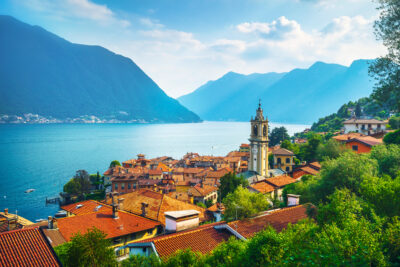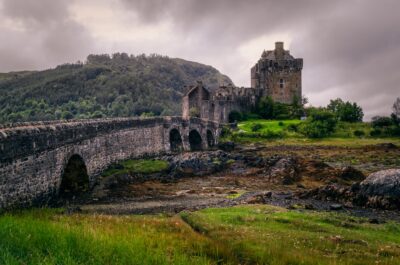One of the best-known rivers for riverboat cruises is the Danube River. It is Europe’s second-longest river and flows through 10 countries, making it a popular choice for its scenic beauty and the rich cultural experience it offers.
Cruises on the Danube often pass through major cities like Vienna, Budapest, and Belgrade, allowing travelers to explore a variety of historical sites, vibrant cultural scenes, and stunning landscapes. The river’s extensive route also includes passing through picturesque towns and the beautiful Wachau Valley, famous for its vineyards and medieval castles, making it a top choice for travelers seeking a comprehensive European river cruising experience.

Germany: The Danube’s Charismatic Starting Point
Our journey along the Danube begins in the picturesque Black Forest of Germany, famous for its fairy-tale landscapes and the iconic cuckoo clocks. Originating in Donaueschingen, the river guides us through charming towns and cities steeped in tradition and history.
In the heart of the Black Forest, cuckoo clocks have been crafted since the 17th century. These intricate timepieces, celebrated for their detailed carvings and the characteristic cuckoo call marking each hour, exemplify the region’s rich artisanal heritage. Triberg is particularly renowned for these clocks, where visitors can explore workshops that continue to produce them by hand.
As the river flows east, it reaches Ulm, notable for its minster with the highest church steeple in the world. This city merges medieval architecture with modern vitality, offering panoramic views of the Danube’s meander through the landscape.
Further downstream, the UNESCO-listed city of Regensburg captivates with its well-preserved medieval structures. Once a major cultural center due to its strategic location, today it invites visitors to relish its historic ambiance and regional Bavarian cuisine—knödel, schnitzel, and local beers are a must-try in the old town’s taverns.
This segment of the Danube in Germany offers a perfect blend of scenic beauty, historical richness, and cultural depth, making it an enchanting starting point for any river cruise.

Austria: Classical Music and Architectural Marvels
As the Danube winds through Austria, it showcases some of Europe’s most culturally rich and picturesque settings. Vienna and the Wachau Valley stand out for their profound historical depth and breathtaking beauty, making this region a cornerstone of Austrian heritage.
Vienna: Imperial Splendor and Musical Legacy
Vienna, the world’s music capital, resounds with the legacies of great composers like Mozart, whose melodies still permeate historic cafes and opulent palaces. Visitors can explore these musical traditions at sites like the Schönbrunn and the Hofburg, as well as enjoy performances at the Vienna State Opera. The city’s famed coffee houses, such as Café Central, offer perfect spots to relish a traditional Viennese coffee and the iconic Sacher-Torte.
The Wachau Valley: Scenic Vistas and Vineyards
Downriver, the UNESCO-listed Wachau Valley enchants with its terraced vineyards and medieval architecture. Towns like Dürnstein and Melk are rich with history—Melk Abbey dominates the landscape with its imposing Baroque structure. This area is ideal for bicycle tours or river cruises, offering a closer look at Austria’s rural beauty while sampling local wines and traditional dishes.
Culinary Delights
Along the Danube, Austrian gastronomy delights travelers, especially in the Wachau Valley, noted for its apricots and robust wines. Each locale along the river provides a unique dining experience, combining regional flavors with stunning views.
In Austria, the Danube not only connects cities and landscapes but also weaves a vibrant tapestry of history, music, and culinary arts, offering travelers an immersive journey through Austria’s cultural heartland.
Slovakia: A Blend of History and Modernity
Slovakia, strategically located along the Danube River, offers a rich blend of history and modernity, especially evident in its vibrant capital, Bratislava. This city sits on the banks of the Danube, providing a picturesque setting that highlights its historic architecture and contemporary cultural life.
Bratislava’s charming Old Town is a delightful mix of medieval and Gothic buildings, bustling with cafes and galleries, while the imposing Bratislava Castle, perched above the river, offers panoramic views of the city and neighboring Austria. The Danube not only enhances Bratislava’s scenic beauty but also serves as a vital artery for commerce and transport, linking Slovakia with other European capitals downriver.
Beyond the capital, the Danube influences Slovakia’s natural landscapes, including the tranquil Danubian Flat, offering opportunities for cycling, bird watching, and exploring river islands rich in biodiversity. Slovakia’s stretch of the Danube is a testament to its historical significance and natural allure, making it a central part of the nation’s identity and a gateway for cultural exchange and tourism.
 Hungary: Thermal Baths and Artistic Legacy
Hungary: Thermal Baths and Artistic Legacy
The Danube shines as it bisects Budapest, a city that melds history with modernity, offering insights into Hungary’s rich traditions and architectural marvels.
Budapest: City of Baths and Landmarks
Budapest, the “Pearl of the Danube,” is famous for its historical Buda Castle and intricate Parliament Building. The city’s renowned thermal baths, like Széchenyi and Gellért, offer unique relaxation amidst bustling urban life.
Museums and Historical Sites
Explore Budapest’s diverse history at the Hungarian National Museum and stroll through the medieval Castle District for sweeping views of the Danube.
Culinary Richness
Hungarian cuisine is noted for its use of paprika in dishes like goulash and paprikás. The Central Market Hall is a prime spot to sample and purchase local specialties.
Danube Bend: Scenic and Historic
North of Budapest, the Danube Bend features picturesque towns like Visegrád and Esztergom, known for their scenic beauty and historic sites. Hungary’s Danube stretch is a vibrant mix of cultural heritage, culinary delights, and scenic landscapes, making it a highlight of any river cruise.
Croatia: Undiscovered Beauty Along the River
The Danube’s journey through Croatia may be brief, but it is profoundly memorable, highlighting unique historical and cultural treasures. This portion of the river, especially around the eastern town of Vukovar, offers visitors a poignant insight into Croatia’s rich history and resilience.
Vukovar: A Symbol of Heritage and Recovery
Vukovar, situated on the banks of the Danube, is emblematic of Croatian endurance and revival. The town’s Baroque buildings and war monuments tell a story of past conflicts and ongoing restoration. Visitors can explore the Vukovar Water Tower, preserved as a symbol of resistance during the Croatian War of Independence, and the Eltz Manor, home to the Vukovar Municipal Museum.
Culinary Delights: A Taste of Slavonia
In this region, Croatian cuisine reflects the influences of Central European and Balkan flavors. Traditional dishes like kulen (spiced sausage) and čobanac (a hearty stew) showcase the rich agricultural produce of the area. Local wines and spirits, particularly those made from Slavonian oak, offer another layer of regional taste that complements the culinary experience.
Croatia’s section of the Danube, though less traveled, offers an intimate glimpse into the nation’s soul, blending history, cuisine, and a heartfelt welcome that leaves a lasting impression on all who visit.
 Serbia: Fortresses and Festivals
Serbia: Fortresses and Festivals
As the Danube flows through Serbia, it enriches the vibrant capital, Belgrade, where history meets modernity.
Belgrade: A Historic Hub
Belgrade’s strategic location at the confluence of the River Sava and Danube showcases the city’s historical importance, exemplified by Kalemegdan Fortress. The area around the fortress, including the bustling riverside promenade, is a favorite for both relaxation and nightlife.
Novi Sad and Cultural Festivities
Nearby, Novi Sad is famed for Petrovaradin Fortress, home to the annual EXIT music festival, blending modern culture with historical settings. Sremski Karlovci offers insights into Serbia’s religious history and famed wine culture.
Culinary Delights
Serbian cuisine features dishes like ćevapi (grilled minced meat) and ajvar (pepper-based condiment), best enjoyed in local taverns along the river. This portion of the Danube in Serbia offers a unique mix of ancient allure and lively culture, reflecting the vibrant spirit of the country.
 The Iron Gates
The Iron Gates
The Iron Gates is a stunning gorge on the Danube River that forms part of the boundary between Serbia and Romania. This dramatic natural feature is one of the most spectacular sections along the Danube, where the river carves a deep channel through the Carpathian and Balkan Mountains.
The gorge spans about 83 miles, with towering cliffs and narrow channels making it a notable geographic and scenic highlight of the river. The Iron Gates also includes the Iron Gates dam, built in the 1970s, which is a major hydroelectric power source for the region and has created one of the largest reservoirs in Europe, the Iron Gates lake.
The area is rich in history and biodiversity, offering stunning vistas and a variety of outdoor activities for visitors.
Bulgaria: Ancient Crossroads of Cultures
As the Danube flows through Bulgaria, it reveals a landscape rich in ancient history and natural beauty, particularly in cities like Vidin and Silistra.
Vidin: Fortresses and Diverse Heritage
Vidin is renowned for Baba Vida, a medieval fortress that captures the essence of Bulgaria’s varied past with its Orthodox churches and Ottoman mosques. These sites offer a deep dive into the region’s historical layers.
Silistra: Historical Crossroads
In Silistra, located on the lower Danube, Roman ruins and Byzantine fortifications illustrate its historical significance as a cultural meeting point. The city provides a living history lesson with its well-preserved archaeological sites.
Culinary Highlights
Along the Danube, Bulgarian cuisine showcases dishes like fish soup and grilled carp, highlighting the influence of the river on local gastronomy. These flavors reflect Bulgaria’s culinary diversity.
Natural Attractions
The journey also features natural sites like Persina Nature Park near Nikopol, a haven for biodiversity and a peaceful retreat for nature lovers.
Bulgaria’s stretch along the Danube offers a vibrant mix of historical sites, cultural heritage, and natural beauty, making it a distinctive and memorable part of any river exploration.
 Romania: The Danube Delta’s Natural Splendor
Romania: The Danube Delta’s Natural Splendor
As the Danube reaches Romania, it showcases a captivating mix of cultural heritage and stunning natural environments, highlighted by historic towns and the expansive Danube Delta.
Drobeta-Turnu Severin: Gateway to History
The journey through Romania begins in Drobeta-Turnu Severin, near the Iron Gates, where the Danube carves through narrow gorges between the Carpathian and Balkan Mountains. This town is famous for its ancient Roman artifacts, including the remains of Trajan’s Bridge, one of the largest arch bridges constructed by the Roman Empire. The local museum offers insights into the region’s rich archaeological legacy.
Constanța: Ancient Tomis and Modern Port
Further east, Constanța, one of the oldest continuously inhabited cities in Romania, offers a blend of ancient history and modern vibrancy. Originally known as Tomis, where the poet Ovid was exiled, today’s Constanța features Roman mosaics, a historic casino, and vibrant beachfront promenades. It serves as a cultural and economic hub on the Black Sea coast.
Danube Delta: A Biosphere Reserve
The journey culminates in the Danube Delta, a UNESCO World Heritage site and one of Europe’s most significant wetlands. The delta is an ecological paradise, teeming with over 300 species of birds and a diverse range of fish and mammals. Visitors can explore this vast area by boat, experiencing the unique landscapes and the traditional fishing villages that dot the waterways.
Culinary Journey
Romanian cuisine along the Danube reflects its agricultural and fishing traditions. Dishes like fish stew, made with fresh catches from the delta, and mămăligă (polenta), often served with cheese and sour cream, highlight local flavors and culinary practices.
Cultural Festivals
Annual festivals and cultural events, such as the Sfântu Gheorghe Days in the delta, celebrate the region’s rich folklore and traditions, offering visitors a deeper understanding of Romanian cultural life.
Romania’s segment of the Danube offers an enriching blend of historical exploration, natural beauty, and cultural immersion, making it a standout destination for those traversing this mighty European river.
Moldova: A Hidden Stretch Along the Danube
Although Moldova has a very short segment of the Danube River, just about 480 meters at Giurgiulești, it is pivotal for the country’s access to the river. This small stretch allows Moldova to have a vital river port which serves as a key point for trade and transportation. While it’s limited in length, the port’s existence opens a gateway to the Black Sea, facilitating Moldova’s economic linkage to the broader European and global markets.
Ukraine: Diverse Ecosystems and Strategic Ports
The Danube’s journey ends as it flows through Ukraine, where it forms part of the border with Romania before reaching its delta. Ukraine’s portion of the Danube includes the bustling port city of Izmail, one of the country’s key river ports. The Danube Delta, largely shared with Romania, is one of Europe’s most significant wetlands and a UNESCO World Heritage site. This area is renowned for its rich biodiversity and is a crucial habitat for numerous species of birds and aquatic life. Ukraine’s section of the Danube not only serves as an important commercial route but is also a vital ecological zone.
Conclusion
The journey along the Danube River is a captivating voyage through the heart of Europe, weaving through landscapes rich in history, culture, and natural beauty. From the Black Forest of Germany to the expansive deltas in Romania and Ukraine, the Danube touches ten diverse countries, each contributing its unique heritage and traditions to the river’s narrative. This river not only connects regions but also brings together people, fostering a shared understanding and appreciation of Europe’s diverse tapestry.
Whether it’s exploring ancient fortresses, experiencing vibrant cultural festivals, or witnessing the serene beauty of natural reserves, the Danube offers something for every traveler. Its waters serve as a link between the past and present, inviting adventurers, historians, and nature lovers alike to discover the enduring influences of one of Europe’s most significant waterways. As the Danube flows, it continues to shape the lives and lands along its banks, leaving an indelible mark on the continent and those who journey its course.
For more information on our Danube River cruises and to book your next adventure, visit the Two Travel Gurus homepage.





